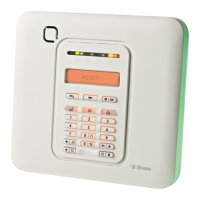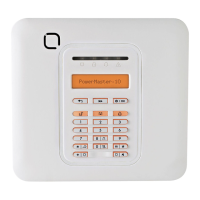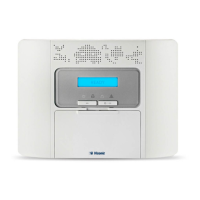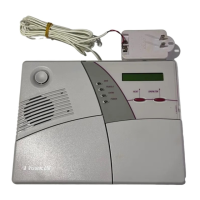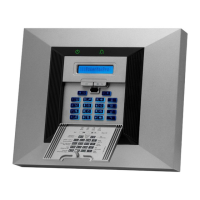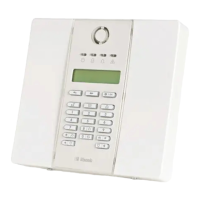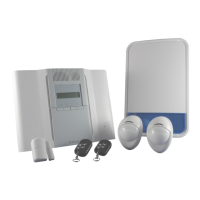D-303222 PowerMaster-10 / PowerMaster-30 Installer's Guide 101
APPENDIX F. Glossary
This list of terms is arranged in alphabetical order. Any term indicated by cursive (italic) letters within the
explanatory text can be looked up separately.
Abort Period: When an alarm is initiated, the internal sounder is activated first for a limited period of time which
is the abort period set by the installer. If you cause an alarm accidentally, you can disarm the system within the
abort period before the real sirens start and before the alarm is reported to the remote responders.
Alarm: There are 2 kinds of alarms:
Loud alarm - both internal and external sirens blare out constantly and the control panel reports the event by
telephone.
Silent alarm - the sirens remain silent, but the control panel reports the event by telephone.
A state of alarm is caused by:
• Motion detected by a motion detector
• Change of state detected by a magnetic contact detector - a closed window or door is opened
• Detection of smoke by a smoke detector
• Tampering with any one of the detectors
• Pressing the two emergency buttons simultaneously (panic).
Arming: Arming the alarm system is an action that prepares it to sound an alarm if a zone is “violated” by
motion or by opening a door or window, as the case may be. The control panel may be armed in various modes
(see AWAY, HOME, INSTANT and LATCHKEY).
Assigned: Refers to zones.
Associated: Refers to devices.
AWAY: This type of arming is used when the protected site is vacated entirely. All zones, interior and perimeter
alike, are protected.
Chime Zones: Allow you to keep track of activity in the protected area while the alarm system is in the disarmed
state. Whenever a chime zone is "opened", the buzzer beeps twice. The buzzer does not beep, however, upon
closing the zone (return to normal). Residences can use this feature to annunciate visitors or look after children.
Businesses can use it to signal when customers enter the premises or when personnel enter restricted areas.
Note: Your installer will never designate a 24-hour zone or a fire zone as a chime zone, because both zone
types actuate an alarm if disturbed while the system is in the disarmed state.
Although one zone or more are designated as chime zones, you can still enable or disable the chime function.
Communicators: Refers to communication channel, for example, GSM.
Control Panel: The control panel is a cabinet that incorporates the electronic circuitry and microprocessor that
control the alarm system. It collects information from various sensors, processes it and responds in various
ways. It also includes the user-interface - control keys, numerical keypad, display, sounder and loudspeaker.
Default Settings: Settings that are applicable to a specific device group.
Detector: The device (apparatus) that sends an alarm, that communicates with the control panel (for example,
Tower 20 AM is a motion detector, MCT-425 is a smoke detector)
Disarming: The opposite of arming - an action that restores the control panel to the normal standby state. In
this state, only fire and 24-hour zones will sound an alarm if violated, but a “panic alarm” may also be initiated.
Disturbed Zone: A zone in a state of alarm (this may be caused by an open window or door or by motion in the
field of view of a motion detector). A disturbed zone is considered “not secured”.
Forced Arming: When any one of the system zones is disturbed (open), the alarm system cannot be armed.
One way to solve this problem is to find and eliminate the cause for zone disturbance (closing doors and
windows). Another way to deal with this is to impose forced arming - automatic de-activation of zones that are
still disturbed upon termination of the exit delay. Bypassed zones will not be protected throughout the arming
period. Even if restored to normal (closed), bypassed zones will remain unprotected until the system is
disarmed.
Permission to “force arm” is given or denied by the installer while programming the system.
HOME: This type of arming is used when people are present within the protected site. A classic example is
night-time at home, when the family is about to retire to bed. With HOME arming, perimeter zones are protected
but interior zones are not. Consequently, motion within interior zones will be ignored by the control panel, but
disturbance of a perimeter zone will cause an alarm.

